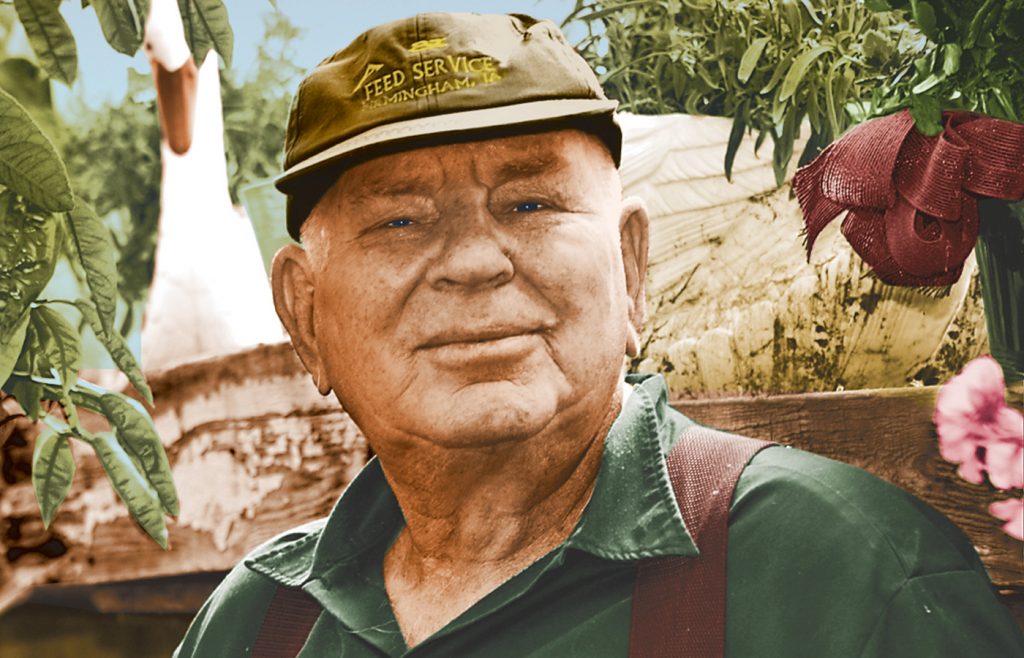
Everyone enjoys the sensual pleasure of tasting a new and exotic tropical fruit, but few people in our corner of Iowa realize that they can taste exotic fruit in their own backyard. This article will introduce you to some unusual fruits and your neighbors who grow them.
While many of these fruits are rare and unusual, they are often no more difficult to grow than the standard backyard fare of apples, peaches, and pears. Many of these fruits are not commercially grown, and the only way you can sample them is to grow them yourself. Some grow unprotected, and some require a bit of protection or a greenhouse.
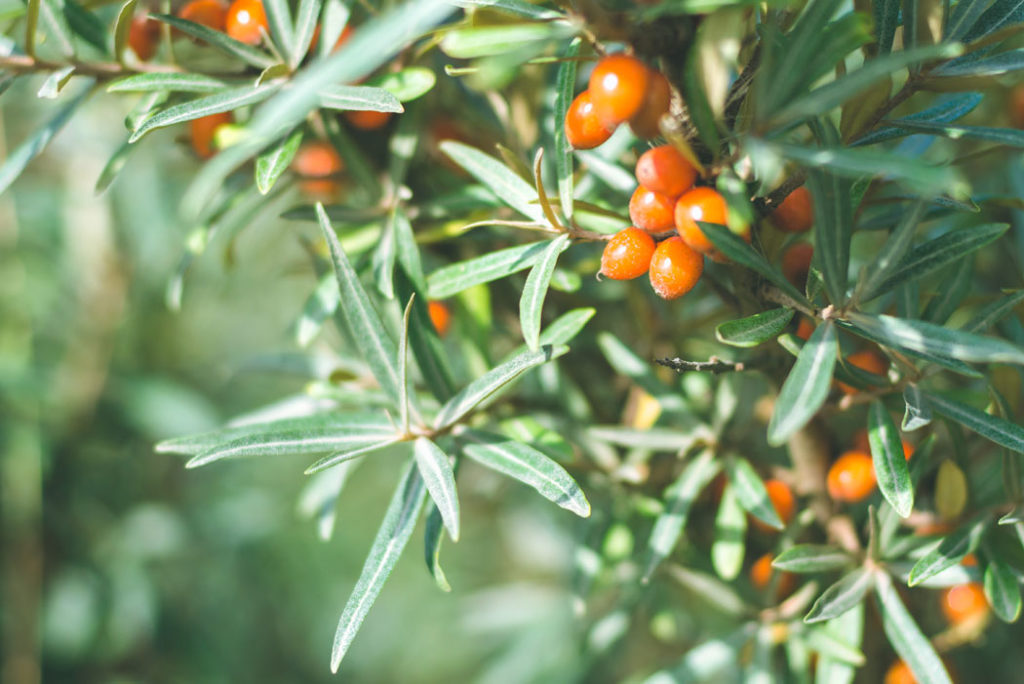
In Southeast Iowa, I’ve sampled pawpaw, persimmon, hardy English walnuts, heartnuts, jostaberries, bush cherries, hardy kiwi, jujube (Chinese date), Asian pears, sea buckthorn, black currants, and tiny alpine strawberries. I also have friends who are growing hardy figs, medlars, maypop, and hardy passionfruit, although I haven’t sampled them yet.
Ernie Hinkle: Mr. Fruit
Ernie Hinkle was a Fairfield Farmers’ Market institution who was known to grow grapefruits and bananas in an underground greenhouse. Ernie, whose truck hood read “Here Comes Mr. Fruit,” planted unusual fruits for more than 40 years, and the area surrounding his house in downtown Birmingham, Iowa, was a veritable botanical garden of edible plants that will grow in Iowa.
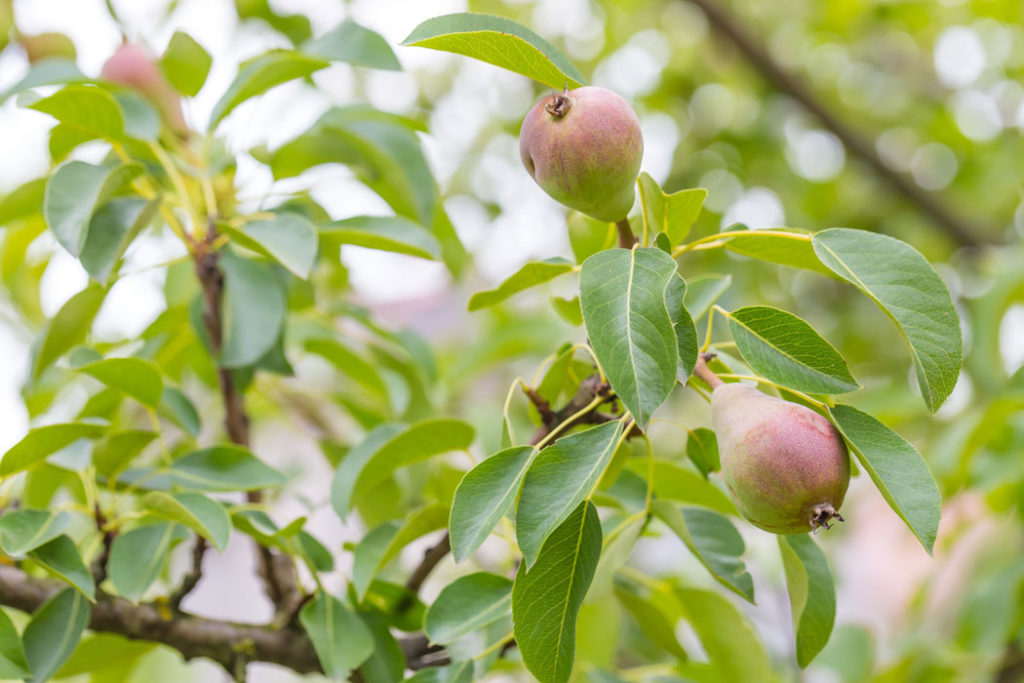
Ernie harvested lots of Asian pears, a round variety that is crisp like an apple. Pears of all types do well in Southeast Iowa.
An Ideal Location
Contrary to popular belief, Southeast Iowa is a great place to grow unusual fruits. Says renowned permaculture designer and horticulturist Douglas Bullock, “Southeast Iowa has the largest variety of native fruit and nut trees of any place I’ve ever seen outside of the tropics.”
There are people whose lifetime passion is to find and selectively breed the best of varieties of these native fruits. Many of these folks are members of the North American Fruit Explorers association, an excellent place to go for information and help in choosing unusual fruits for Iowa. (I found out how to grow several varieties of figs as far north as Chicago from this website).
Seed Savers Exchange, while dealing mostly with annual vegetable varieties, also has members whose interest is unusual fruits and tree crops.
Professional fruit explorers like David Fairchild, Frank Meyer, and Luther Burbank brought back unusual fruits from other parts of the world that have similar climates to Iowa—from places where it is really hot in the summer and really cold in the winter, places with large great plains like Russia, China, and Canada. Many of these plants have been selectively bred and developed by our ancestors for thousands of years, favoring traits like flavor, nutrition, hardiness, and reliable crops. In contrast, today’s fruit are often selected for commercial qualities, like ease of shipment and appearance.
The selection and development of these fruits over millennia is one of the most precious parts of our cultural heritage, more precious than diamonds or gold, and it is not something we could easily replicate if we needed to. If we do not grow these fruits, we are in danger of losing this gift of thousands of years of development.
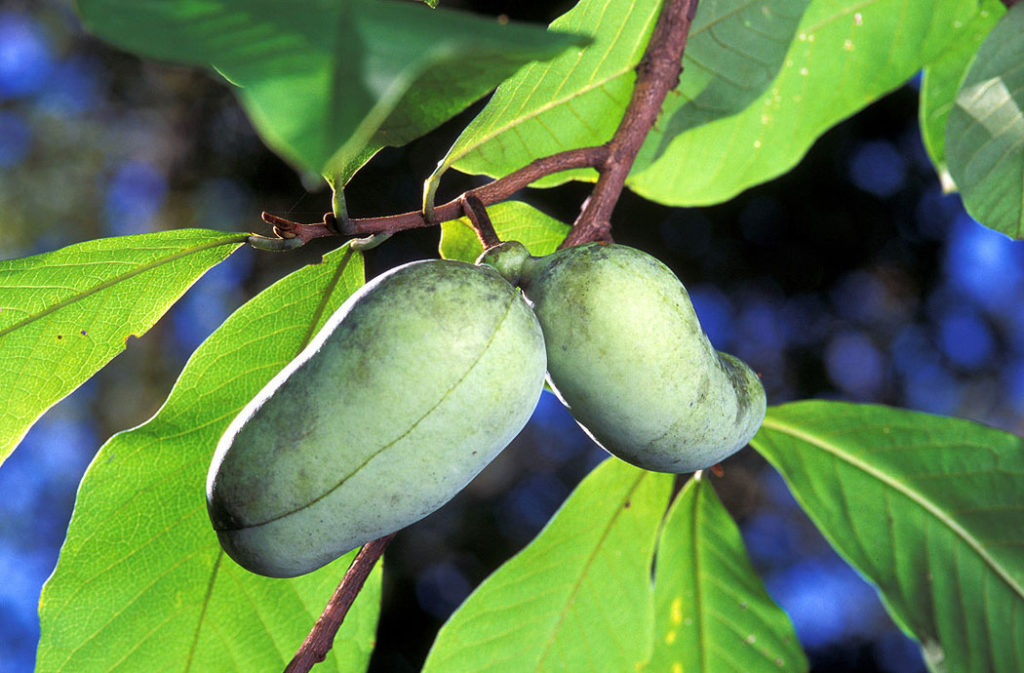
In addition to the networks of passionate amateur fruit breeders, professional fruit breeders like the late Elwin Meader of the University of New Hampshire (Meader persimmon, Joy and Jan bush cherry, Reliance peach), Elmer Swenson of Wisconsin (grapes), Phillip Rutter of Badgersett Research Farm in Minnesota (hybrid hazels, American/Asian chestnut hybrids), and Corwin Davis of Michigan (pawpaw) are continuing this work. Much of this research and development work is done without government assistance.
Fruit trees can be either seedling or grafted. Seedling trees are grown from seed, and, like human offspring, may or may not be like their parents. Grafted trees, where a known variety is grafted onto a root grown from seed, produce fruit exactly like the tree that donated the graft. For example, if one tree bears really great fruit, while another tree has poor fruits but has roots that do well in heavy clay, grafting allows you to combine the best characteristics of each.
Here are some folks in Southeast Iowa and the fruits they grow.
Dan Say: Pawpaws
Dan Say planted his first pawpaw 10 years or so ago from seed that he got from renowned pawpaw breeder Corwin Davis. The pawpaw is the largest native North American fruit, and fruits weighing over one pound are not uncommon. Pawpaw is the most northern member of the tropical fruit family called sugar apples, and includes soursop, cherimoya, aetimoya, and rollinia (my wife Valerie’s all-time favorite fruit). It has a brown-sugar custard texture with seeds imbedded in the fruit (many tropical fruits have this kind of structure). The fruit has a sweet exotic flavor, with hints of vanilla and spices.
I once bought a hundred pounds of pawpaw fruit from Corwin Davis orchards in Michigan (he and his son-in-law Larry Sibley harvest thousands of pounds of pawpaw each year, and they also sell seed, seedling trees, and grafted trees). The University of Indiana is investigating anticancer properties of this plant.
Young pawpaws have sensitive roots that sometimes make transplanting difficult. Dan has had good luck planting seeds of known good varieties. Of course, if you want a specific variety, you will have to plant a grafted tree. My website lists several sources for seed, seedling, and grafted trees.
Tom Wahl, Red Fern Farm
Tom Wahl, Red Fern Farm: Pawpaw, Persimmon, improved black walnuts, butternuts, improved edible acorn, chestnut, hardy kiwi. Tom Wahl is the Southeast Iowa resource for unconventional fruits and nuts. He has more experience growing and propagating unusual fruits than anyone else in the region, and has been a leader in introducing the idea of tree crops and agroforestry here. Among his many projects, he is working to develop a chestnut industry in Southeast Iowa, and started a collective of growers called the Southeast Iowa Nut Growers (SING), modeled after the Southern Ontario Nut Growers (SONG).
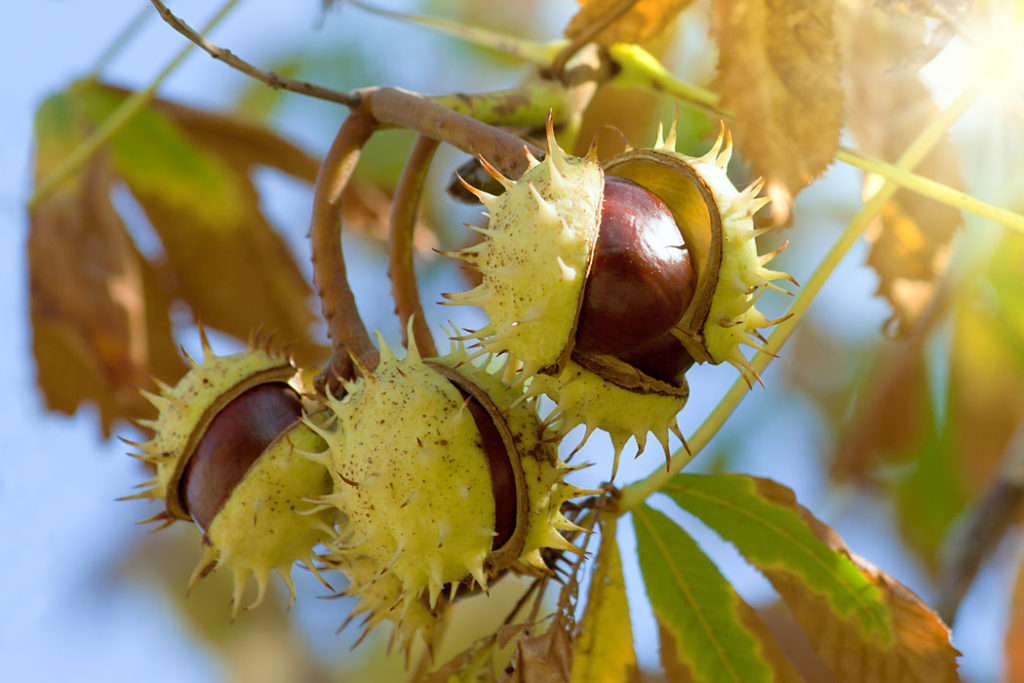
Chestnuts, which have a protein profile more similar to a grain than a nut, have tremendous potential. There are areas in Italy and France where families have made a living for centuries from chestnuts. Chestnuts have the potential to be a huge boost to the local economy—we could have over 1,000 people making a living from chestnuts in Southeast Iowa. Like soybeans, chestnuts can be used to make a wide variety of delicious sweet and savory foods.
Tom is a wealth of information on unusual fruits and potential commercial applications, and he has a nursery that propagates and sells seedling and grafted varieties of many fruits and nuts. He can tell you how to get USDA-SCS cost share for riparian buffer strips planed with unusual fruits.
Kelly Custer
In 2005, Kelly Custer began researching and planting unusual edible plants at her home on the corner of 4th and Broadway in Fairfield. She has harvested jujube, gallons of Doyle thornless blackberries, grapes, and a peach crop so heavy that it broke the tree. Here are some of the fruits that Kelly grows.
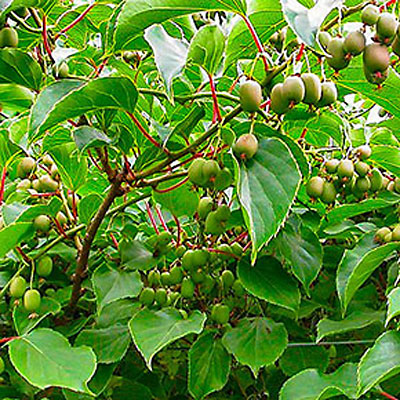
Hardy Kiwi (actinidia) is a vine that yields quarter-size fuzzless kiwis that you eat whole like a grape. Once established, the vine is a very vigorous grower, and some varieties are hardy to 25 below zero.
Jujube (Zizyphus jujuba) also called Chinese date, is a tree with small fruits that dry on the tree to the consistency of dates. Jujube should be marginally hardy here, but Kelly’s have been doing well in her protected city location. Kelly has planted them on the strip between the sidewalk and the road.
Aronia (aronia melanocarpa) is the second most popular ice cream flavor in Poland. A native American fruit, it was introduced to Eastern Europe early in the 20th century, where it was developed into a commercial fruit. These developed varieties were reintroduced into this country in the last ten years. I’ve seen U.S.-made aronia juice on the shelves in Sam’s Club in California. The fruit is astringent.
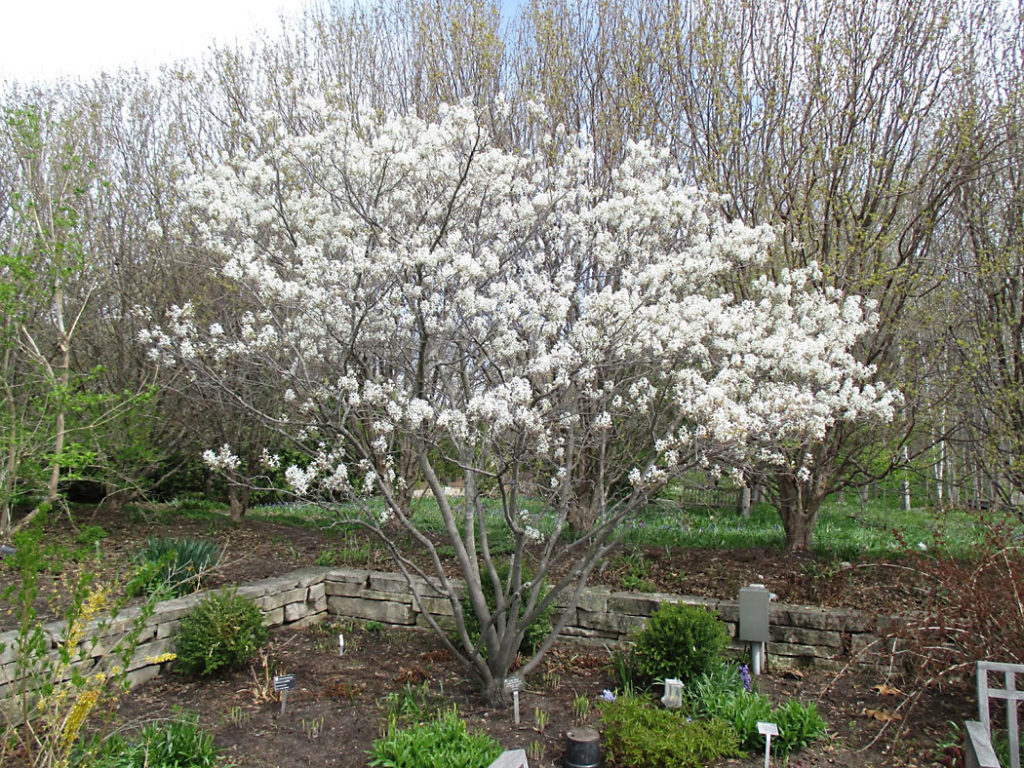
Serviceberry (Saskatoon, amalanchier) is another native American fruit that does well in Southeast Iowa. It was bred and developed as a commercial crop on the great plains in Canada. The best varieties taste like blueberry with a hint of almond. Serviceberry can be a bush or small tree, and it has been planted as an ornamental tree in Iowa City and in front of the train station in Ottumwa. I’ve tasted excellent fruit in both places, and some of the Iowa City fruits were the size of a quarter.
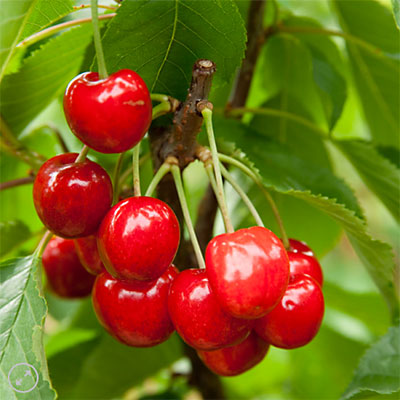
Joy bush cherry and Jan bush cherry, developed by Elwin Meader of the University of New Hampshire from Nebraska sand hill cherries, are slightly tart cherries that grow on a bush.
Medlar is a fruit that was popular in Medieval Europe. Picked in late fall when they are still hard, they are then left to soften for a few weeks (a process called bletting) and taste like cinnamon apple sauce.
I’ve noticed that Kelly’s in-town location provides a much more protected environment than my exposed country site. The windbreak and “heat island” effect in town provide a microclimate that is at least one USDA zone milder than my exposed location in the country just a few miles away. This year, the first frost at Kelly’s in-town location was three weeks later than the first frost at my place.
Sam James
Sam James is a biology professor and world expert on earthworms. Sam grew up in Iowa City, and his family planted many unusual fruits in their back yard. He planted unusual fruits on the MIU campus in Fairfield for more than 10 years. Sam does some of his own propagation and grafting. He has a very vigorous hardy kiwi that bears delicious fruit. Sam has also eaten fruit from his bush cherries and grafted persimmon.
Standard fruits that Sam recommends are North Star cherries and local white peaches (they grow quite well from seed). He recommends a prebud break (early March) spray of an organic copper based fungicide to stop leaf curl. He highly recommends pears, both Asian and regular, noting that pears seem to have fewer problems than apples in southeast Iowa.
Fruits in the Ribes family (currants, gooseberries) do well in Iowa and are a common forest understory plant.
Nanking bush cherries are good for fresh eating, and also ornamental with fragrant white flowers in spring.
Sam recommends these uncommon grape varieties: Swenson Red, Alden, Interlaken, and Himrod.
Hybrid Asian-American persimmons are excellent fruit, easy to grow, with no pests. DO NOT bother with American persimmons, which are too small and unreliable in quality from year to year. Get a true hybrid.
Quinces are both very tough and very useful. They make good quince sauce or a self-jelling quince sweet that you can slice and eat cool. (See Raintree Nursery).
Care for Your Trees
Nothing will do very well if you don’t take care of it. Sam recommends annual fertilization with a dose of worm castings and mulch. Be prepared for rabbits, squirrels, and mice.
Brian Robbins and Abundance Ecovillage
A few years ago Brian Robbins and I started a small nursery at Abundance Ecovillage and filled it with 200 or so varieties of edible and useful plants selected by researching areas around the world with similar climates to Iowa.
An enthusiastic and energetic young person, Brian has dedicated his life to rebuilding the world through the principles of permaculture design. He moved to Southeast Iowa because of the potential for growing unusual fruits here. Here are a couple of unusual edibles that we have sampled at Abundance Ecovillage:
Sea Buckthorn (hippophae rhamnoides) is an attractive thorny bush that produces masses of tart bright orange berries. These berries have 20 times the Vitamin C of orange juice and I’ve been told that they have every vitamin known to man. Popular in Eastern Europe and Russia, the berries are used as a substitute for orange juice. Their healing properties are such that they were used to treat radiation sickness during the Chernobyl nuclear reactor accident in Russia.
We’ve planted 20 or so varieties of Jerusalem artichoke, a productive tuber that has a nutty flavor, that we obtained from Seed Savers Exchange.
Like any tree in Southeast Iowa, these unusual fruits will require quite a lot of care in the first few years. They need to be protected from weeds, grasses, wildlife, and the weather extremes (tree shelters, available at most RC&Ds, do most of these things for a very small cost). You will need to know the pollination requirements of your plants in order to reliably get fruits.
Below is a list of resources where you can get plants and more information.
Websites:
- North American Fruit Explorers (Nafex) membership $19/year: www.nafex.org
- Plants for a future: www.pfaf.org
- Seed savers exchange: www.seedsavers.org
Nurseries:
- Tom Wahl/Red Fern Farm
- Oikos Tree Crops: Nut trees, pawpaws, and perennial food plants
- Mistletoe-Carter Seeds: Trees and shrubs, wholesale seeds
- Bagdersett Research Farm: Located in southeastern Minnesota. Offering cold-hardy, low-maintenance, blight-hardy, productive nut trees, including hazels, chestnuts, hickories, pecans, and more!
- Hidden Springs Nursery: 170 Hidden Springs Lane, Cookeville, TN, 38501 (931) 268-2592 • Annie or Hector Black. A small mail-order business that sells organically grown edible landscape plants.
- Burnt Ridge Nursery: A family-owned farm in the foothills of the Cascade Mountains, offering fruiting plants, nut trees, and more
- Raintree Nursery: Over 800 varieties of fruit trees, berry plants, unique edibles, and more for the backyard gardener. Located in the Pacific Northwest.
- One Green World: A family-owned nursery in Portland, Oregon, providing a huge selection of fruiting trees and shrubs, berries, vines, unique citrus, nut trees, vegetables and more.
- Tollgate Nursery: 20803 Junction Rd, Bellevue, MI 49021, (616) 781-5887, Larry Sibley or Corwin Davis
Books:
- Tree Crops, by J. Russel Smith
- Unusual Fruits Worthy of Attention, by Lee Reich
- Lost Crops of the Incas: online for free at books.nap.edu/books/030904264X/html/
- Plants for a Future, by Ken Fern
